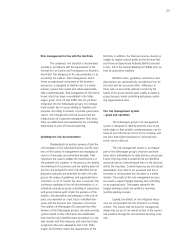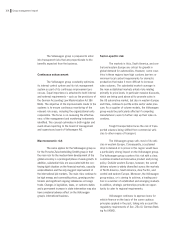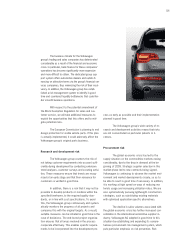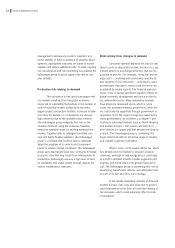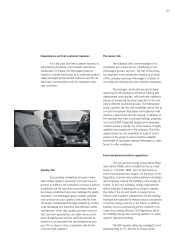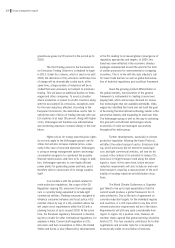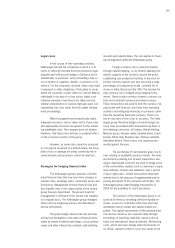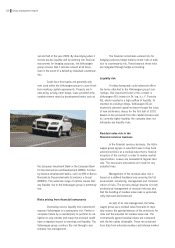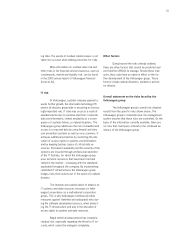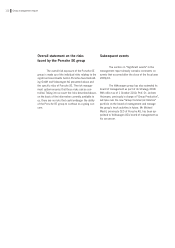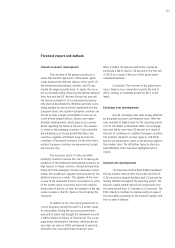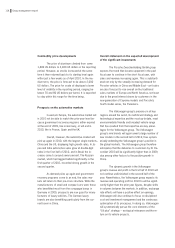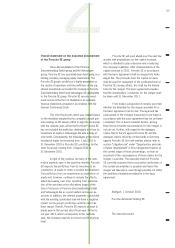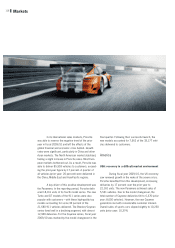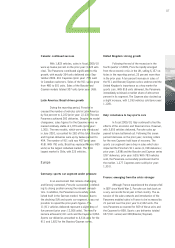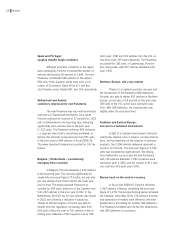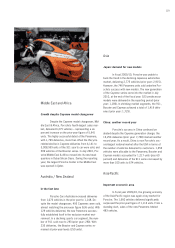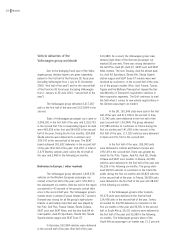Porsche 2009 Annual Report Download - page 113
Download and view the complete annual report
Please find page 113 of the 2009 Porsche annual report below. You can navigate through the pages in the report by either clicking on the pages listed below, or by using the keyword search tool below to find specific information within the annual report.Forecast report and outlook
Overall economic development
The recovery of the global economy as a
whole that became apparent in 2010 varies signifi-
cantly between the different regions of the world. Of
the traditional industrialized countries, the US was
initially the largest growth driver. In Japan, the recov-
ery is principally being driven by international demand
from Asia and the US. Western Europe has also left
the recession behind it, but is experiencing particu-
larly diverse developments. Whereas Germany is pro-
viding impetus for the economic development in the
European Union, the southern European countries are
forced to steer a tough consolidation course on ac-
count of their budget deficits. Greece saw rather
dramatic developments, which gave rise to serious
doubt regarding the future of the euro. The situation
is similar in the emerging countries: China and India
are exhibiting such strong growth that these two
countries, together with Brazil, have become the
mainstays of the global economy. On the other hand,
eastern European countries are experiencing a grad-
ual recovery only.
The economic boom in China and other
emerging countries involves the risk of increasing de-
pendence of the traditional industrialized countries on
high exports to these countries. Should demand from
China and other emerging countries decrease consid-
erably, this would have negative repercussions for the
global economy as a whole. This applies all the more
in view of the downward trend in consumption in some
of the world’s major economies due to the massive
destruction of assets, as seen for example on the real
estate markets in the US, Spain or the UK during the
recession.
In addition to this, the end of government re-
covery programs around the world is a further cause
for uncertainty. During the recession governments
and central banks had brought the downward trend to
a halt by means of billions of financial aid. The scrap-
page bonus introduced in Germany, which produced
very high car sales in 2009 and expired at year-end,
illustrates how successful these measures were.
When it ended, the German automotive market ex-
perienced a fall of close to 30 percent in the first half
of 2010 as a result of the loss of this government-
subsidized demand.
Conclusion: The recovery of the global econ-
omy is likely to lose momentum towards the end of
2010, slowing to moderate growth by 2011 at the
latest.
Exchange rate developments
Overall, exchange rates were heavily affected
by the global economic and financial crisis. After the
euro reached its highest level for the reporting period
at 1.51 US dollars in November 2009, the exchange
rate then fell by more than 20 percent as a result of
the lack of confidence in southern European countries.
The markets started to recover again by mid-2010,
but are not expected to return to the previous highs in
the medium term. The difficulties faced by the Euro-
pean Monetary Union had been highlighted all too
clearly.
Interest rate developments
The European Central Bank (ECB) maintained
the key interest rates at their historically low level of
0.25 percent for deposit facilities and 1.0 percent for
lending facilities throughout the reporting period. The
ten-year capital market returns fell continuously over
the same period from 3.7 percent to 2.9 percent. The
ECB is likely to maintain its cautious policy in view of
the uncertainty prevailing on the financial markets and
the low rate of inflation.
113


